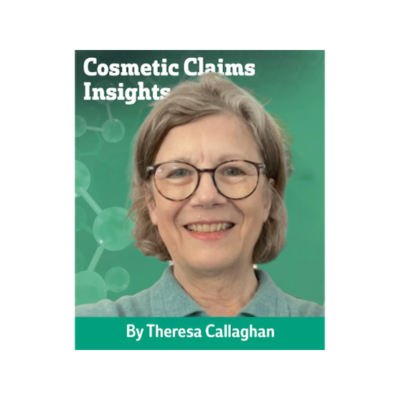
By Theresa Callaghan
“Staying on top of two major hot-button topics in our industry—Misinformation and AI—I’m diving back into both of these areas that I’ve explored before. This time, I’m taking a closer look at how these themes are shaping the latest apps and their impact”.
In today’s world, the beauty industry holds undeniable sway over how consumers perceive themselves and their appearance. This power has only grown in the age of technology, with beauty apps emerging as major players in shaping beauty standards. From virtual try-ons to ingredient analysis, these apps provide users with the promise of convenience, instant feedback, and personalized recommendations. Yet beneath their appealing surface, lies an uncomfortable truth: misinformation. Whether intentional or not, beauty apps often mislead consumers, encouraging unhealthy beauty standards, unrealistic expectations, and heightened insecurities. These digital tools, once thought to be mere enhancers of self-image, can subtly control and distort consumers’ perceptions of beauty.
Virtual Try-Ons: A Digital Facade
Among the most popular features of beauty apps are virtual try-ons, which allow users to test makeup, hairstyles, and skincare routines by projecting digital versions of products onto their faces. While this interactive technology is fun and engaging, it often distorts reality, setting consumers up for disappointment. The algorithms behind virtual try-ons are designed to match makeup shades to users’ features, but they frequently fall short of accuracy, especially when lighting or skin texture is taken into account. As a result, users may develop unrealistic expectations about how makeup should look, expecting flawless results in real life—results that often fail to materialize once they apply the product in their own homes.
Furthermore, these try-on features often manipulate facial features, accentuating certain elements like eyes and lips, creating an idealized version of beauty that is far from natural. This curated image can make users feel dissatisfied with their own appearance, prompting them to buy products in an attempt to replicate an unattainable look.
The AI Influence: Narrow Beauty Standards and Bias
Artificial intelligence (AI) and machine learning are at the core of many beauty apps, offering personalized product recommendations based on users’ skin types, preferences, and facial features. While these technologies may seem to offer a tailored experience, they often perpetuate narrow, Westernized beauty ideals. AI algorithms used to recommend foundation shades, for example, frequently fail to account for the diversity of skin tones, prioritizing a limited spectrum of shades while leaving darker skin tones underserved. This exclusion reinforces a homogeneous definition of beauty, subtly suggesting that certain features—such as lighter skin—are more desirable than others.
Moreover, many beauty apps are driven by commercial interests. Products recommended by these apps are often selected based on profit-driven partnerships, rather than on what best meets the needs of the consumer. As a result, the advice users receive may be more about pushing profitable products than providing unbiased recommendations. This commercialization of beauty advice contributes to the spread of misinformation, leading consumers to invest in products that may not truly serve their needs.
Filters: The Illusion of Perfection
Another hallmark of beauty apps is the use of filters, which can smooth skin, alter facial shapes, and even adjust lighting to create an idealized version of the user’s face. While filters are marketed as fun and harmless, their widespread use can have a profound impact on self-esteem. Research has shown that frequent use of filters can cause users to compare their natural appearance to these digitally enhanced versions of themselves, leading to feelings of inadequacy and dissatisfaction.
The proliferation of filters also reinforces a narrow standard of beauty, where smooth skin, wide eyes, and plump lips become the norm. Users, influenced by this “perfect” image, may begin to feel that their natural features are inadequate, driving them to rely more heavily on cosmetic products or treatments. In extreme cases, this can lead to drastic steps such as cosmetic surgery, in pursuit of an unattainable digital ideal.
Ingredient Apps: Misinformation in the Pursuit of Transparency
In addition to virtual try-ons and AI recommendations, ingredient analysis apps have become increasingly popular. These apps promise to help consumers make informed decisions by providing detailed information about the ingredients in beauty products. While the intention is to empower users, the execution often falls short. Many ingredient apps oversimplify complex chemical properties, labeling ingredients as “good” or “bad” without context. For instance, alcohol, often labeled as harmful, can be beneficial in certain concentrations, depending on the formulation. This kind of oversimplification can mislead consumers, encouraging them to dismiss products that could be beneficial for their skin.
The algorithms behind these apps may also lack scientific rigor or fail to keep up with the latest research, meaning they could provide outdated or inaccurate information. Some apps incorrectly flag ingredients such as parabens or sulphates as universally harmful, despite the fact that many regulatory bodies consider them safe in specific concentrations. This fosters unnecessary fear, causing consumers to avoid products that may be perfectly safe and effective for their skincare needs.
Moreover, ingredient apps often have financial ties to specific brands, leading to biased recommendations. A product’s “clean” or “natural” label may be highlighted, even when such terms are poorly defined or unregulated. This can skew consumers’ perceptions and push them toward products that are not necessarily the best choice for their skin, simply because they align with the app’s commercial interests.
The Ethical Responsibility of Beauty Apps
As beauty apps continue to evolve, so too must the responsibility of the companies behind them. These apps have the power to shape consumer perceptions and influence buying behavior. While they can offer convenience and entertainment, they must also prioritize transparency, inclusivity, and ethical standards in their development. It is vital that beauty apps provide accurate, science-backed information rather than commercial-driven recommendations. They must move beyond reinforcing harmful beauty ideals, instead promoting diverse and realistic beauty standards that embrace all skin tones, body types, and personal styles.
Beauty companies should also be held accountable for the potential psychological impact their apps may have on users. Encouraging users to embrace their natural features, providing honest product reviews, and fostering self-acceptance should be key priorities in app design. In doing so, beauty apps can evolve from mere marketing tools into powerful instruments for empowerment, helping users make informed, thoughtful decisions about the products they choose.
Conclusion: Striving for a Healthier Beauty Culture
Beauty apps have transformed how consumers approach beauty products, offering convenience and instant gratification. However, the misinformation these apps sometimes perpetuate—through distorted virtual try-ons, biased AI algorithms, misleading filters, and oversimplified ingredient analyses—can have a detrimental effect on self-perception. Consumers, bombarded by idealized digital images and biased recommendations, may feel dissatisfied with their natural appearance and compelled to buy products that promise to meet unattainable standards.
For beauty apps to truly empower users, they must embrace transparency, inclusivity, and scientific accuracy, moving away from commercialization and unrealistic beauty ideals. By doing so, they can foster a healthier, more inclusive beauty culture—one that celebrates natural beauty and encourages consumers to make informed choices, both online and offline.

Theresa Callaghan
Theresa Callaghan, a PhD biochemist with over 35 years of experience in corporate skin care research, has held key R&D senior roles for companies including LVMH, Unilever, Marks & Spencer, J&J, Evonik, Hill-Top Research, and proDERM. In 2008, she created Callaghan Consulting International, focusing on cosmetic claims development with brands and ingredient suppliers. She is a widely published author, frequent speaker, and contributor to peer-reviewed journals. Her acclaimed book, 'Help! I'm Covered in Adjectives: Cosmetic Claims & The Consumer', is now in its second edition and translated. She is a member of the Society of Cosmetic Scientists (SCANCOS) and British Herbal Medicine Association. Theresa serves on the editorial peer review board of the International Journal of Cosmetic Science. She also mentors, and has her own Cosmetic Claims Insights Column with Euro Cosmetics.



